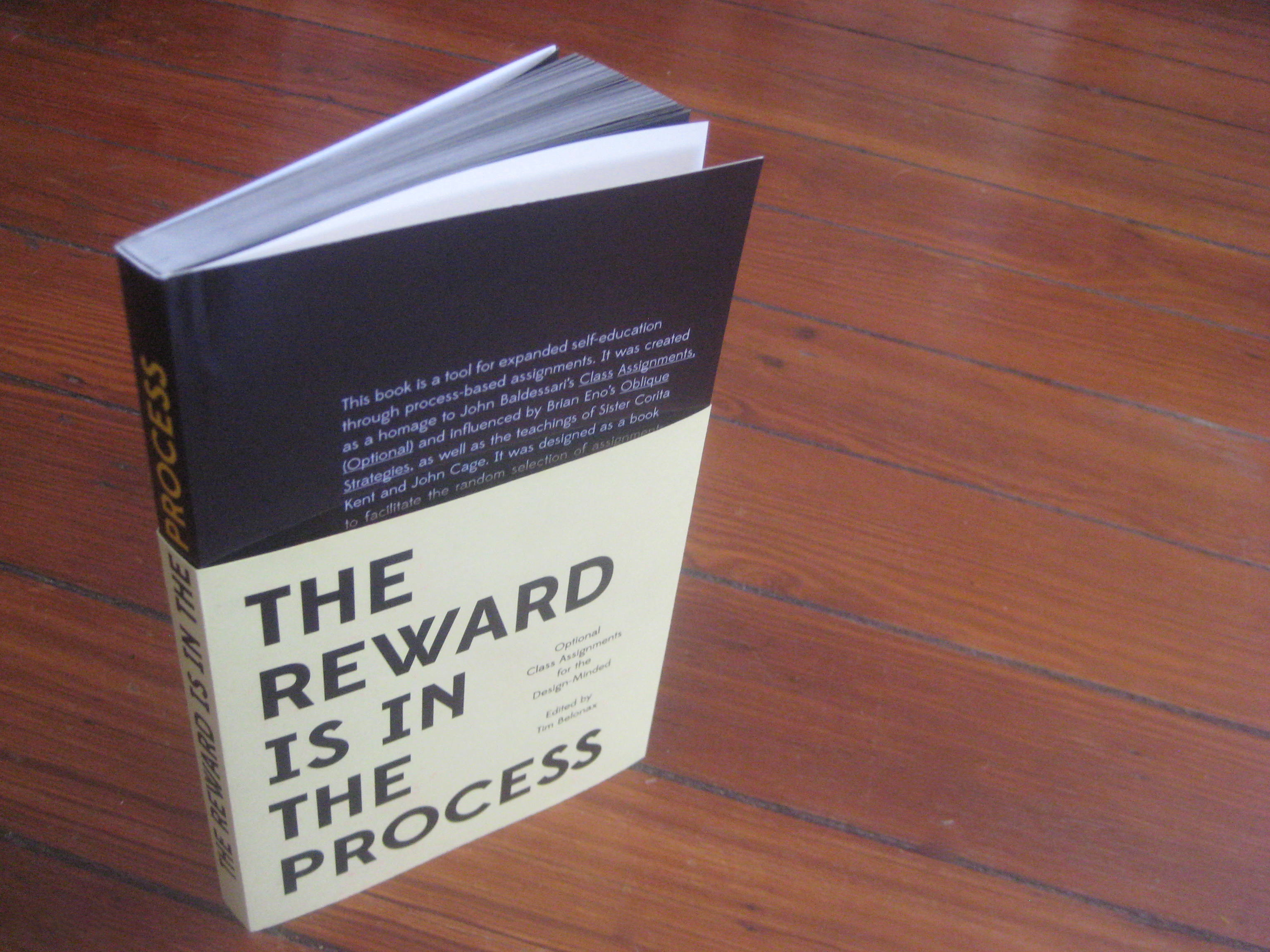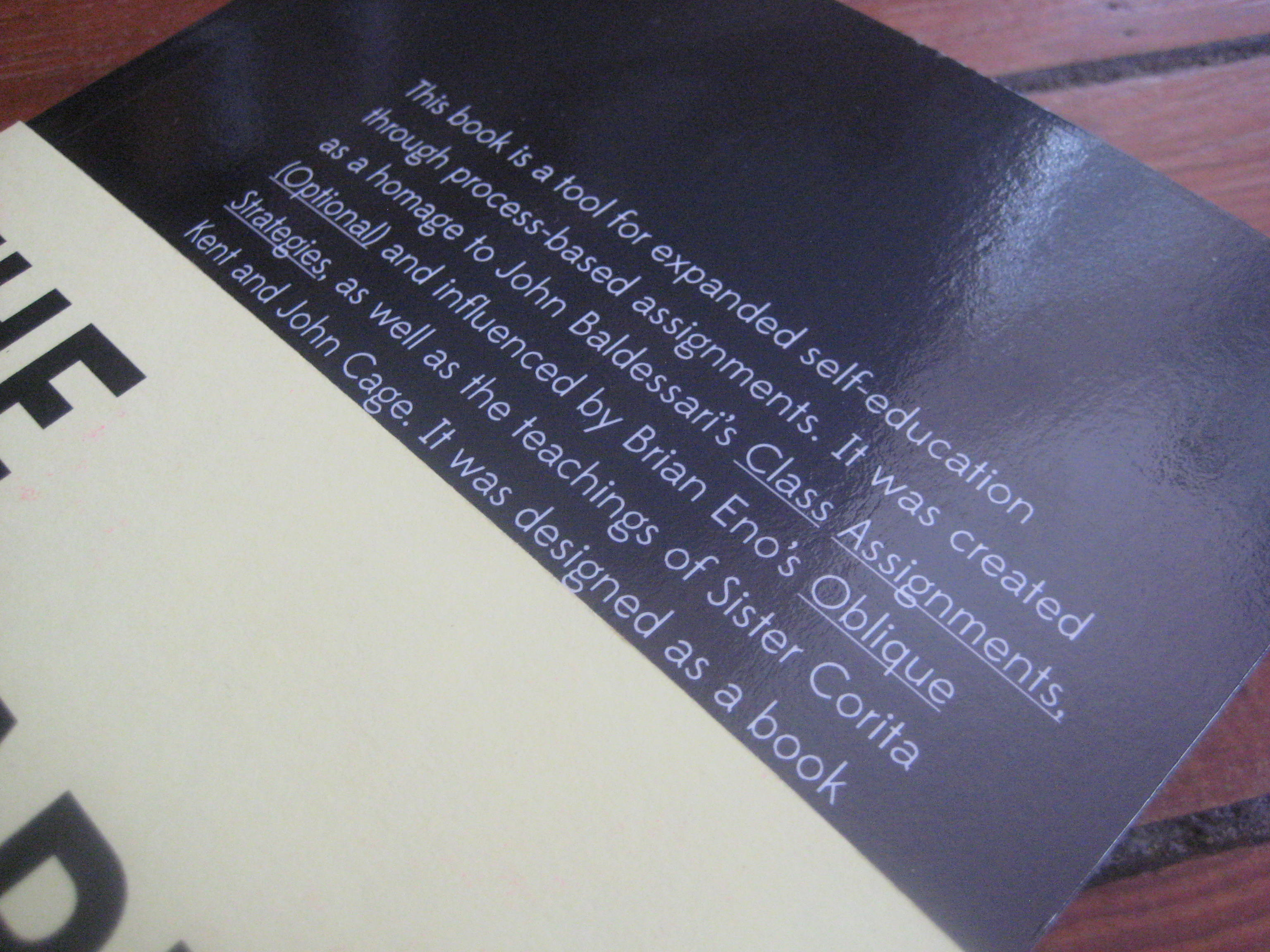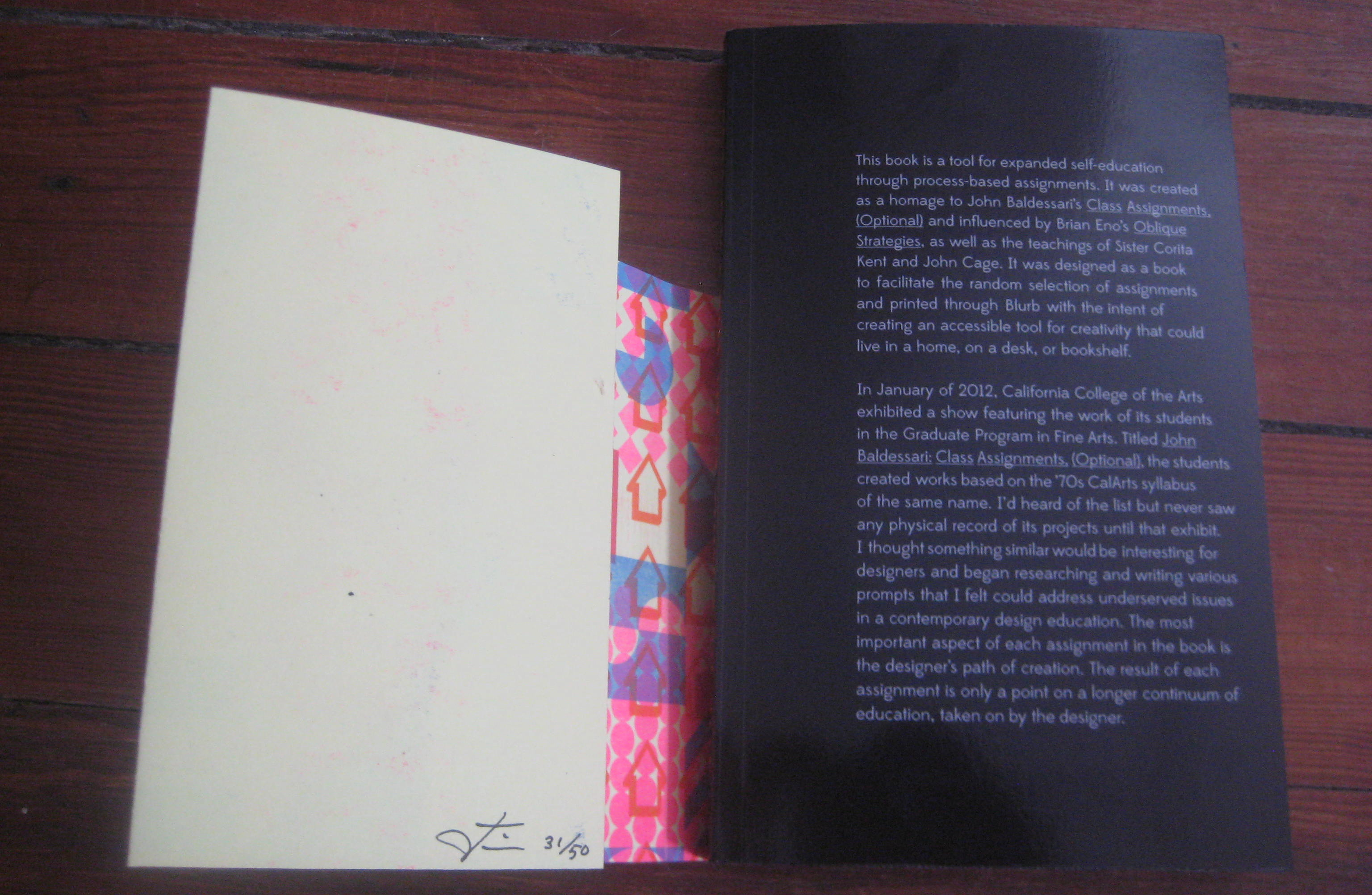
It took me a long time — well past my student years, for sure — to appreciate the possibilities of the assignment, as a form. More recently I’ve expressed my enthusiasm for creative and useful assignments here, inspired by the book Draw It With Your Eyes Closed: The Art of the Assignment.
So I could not have been more intrigued to learn of Tim Belonax’s recent project, The Reward Is In The Process: Optional Class Assignments for the Design-Minded . It’s a book — described as “a tool for expanded self-education through process-based assignments” — inspired by John Baldessari’s brilliant and well-known “Class Assignments: Optional.”
(Belonax's book is currently available via Blurb; my copy, pictured here, was part of a somewhat fancier limited edition that I bought through his Etsy store. That version sold out before I had time to write this. But it's the ideas this project represents that I am endorsing; I'm quite sure they hold up in the Blurb form-factor.)


Baldessari’s list, if you’ve never seen it, is delightful and amazing, and at least potentially useful — a dazzling thought exercise in thought exercises, it dares you to move beyond appreciating the provocations and really acting on (at least a few) of its 109 suggestions. Even if you don’t, the thought exercising alone will do you good.
At least that’s how I read it. And Belonax, a very smart and interesting designer based in San Francisco (@timbelonax), evidently concluded that a similar list of assignment-prompts could be made for designers.
The result is this book, which presents 109 assignments, each meant to serve as “a point on a longer continuum of education, taken on by the designer.” A few examples I like, in no particular order:
· Give a fifteen minute presentation about a designer or a piece of design that you hate. Use proper research citations.
· Employ a mop in the creation of a typeface.
· Find your nearest sign painter and interview him/her.
· Go to a town you are unfamiliar with and map it. Give your map to a stranger.
· Redesign a piece of junk mail. Mail it back to the sender. Show the original and your redesign side-by-side along with your thoughts on the redesign.
· Make something backwards.
· Using the Apple store as your studio, create a piece of design during one visit.
· Call ten people and tell them one thing you appreciate about them.
· Attend a city council meeting in your city.
· Start something old.
And so on. Here's a fast video flip-through posted on Instagram:
The point is to push creative thinking outside of workaday (client- and market-driven) constraints and demands; not just finding new solutions, but inventing new problems to solve.
As the book asks: “How else will designers find something new if they don’t go beyond what is asked?”
Indeed. How will any of us?
